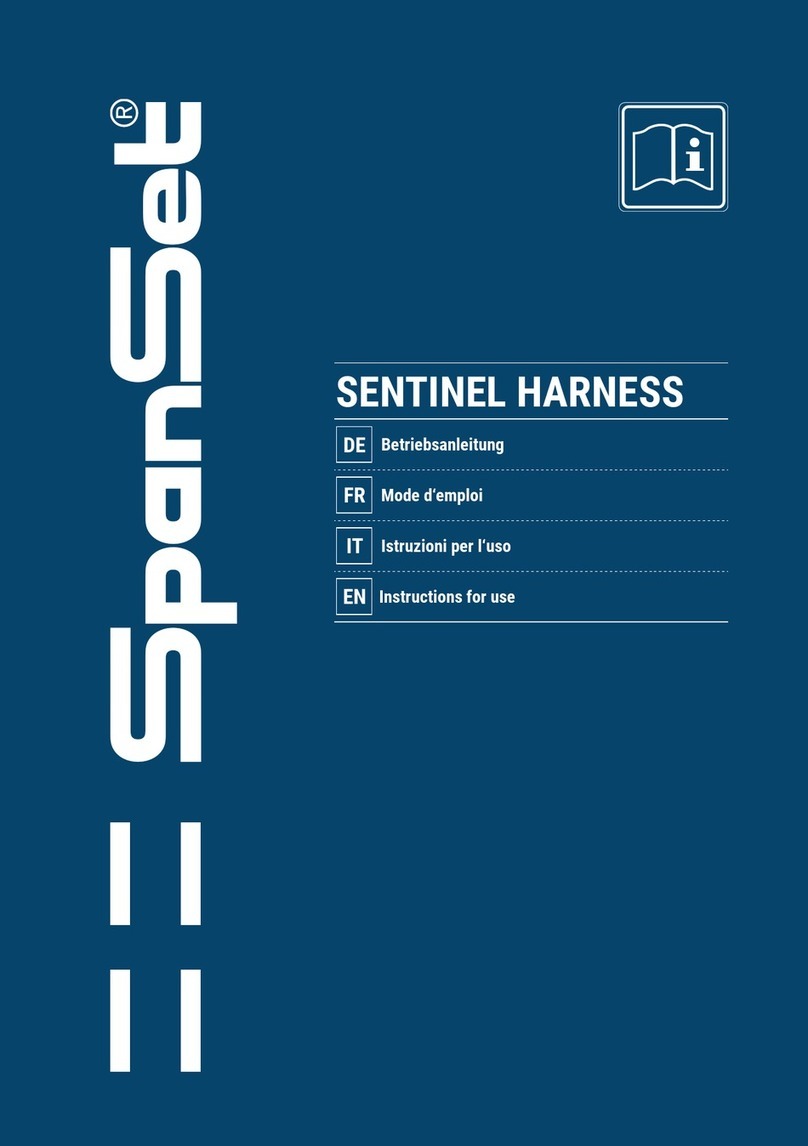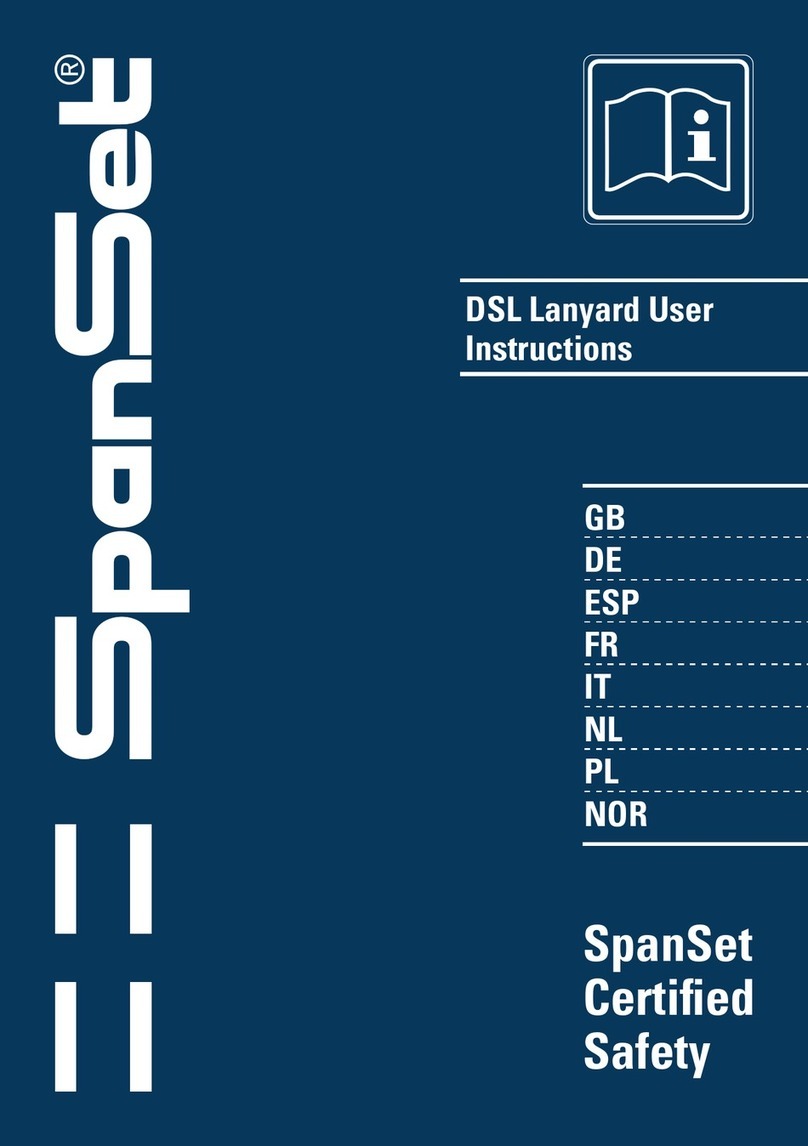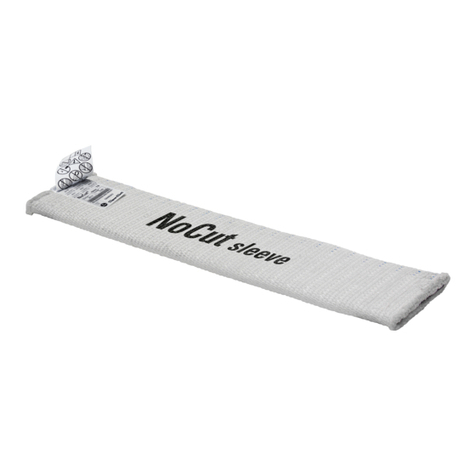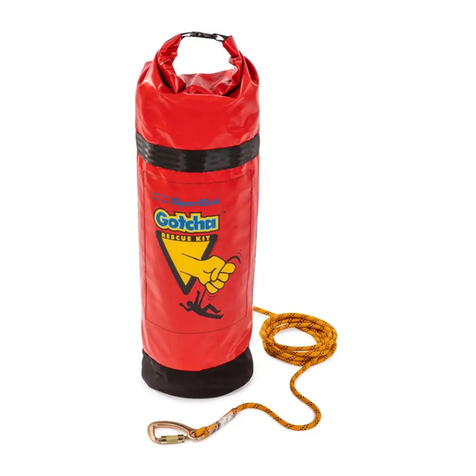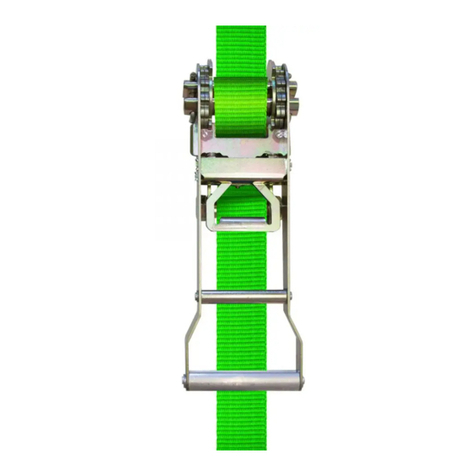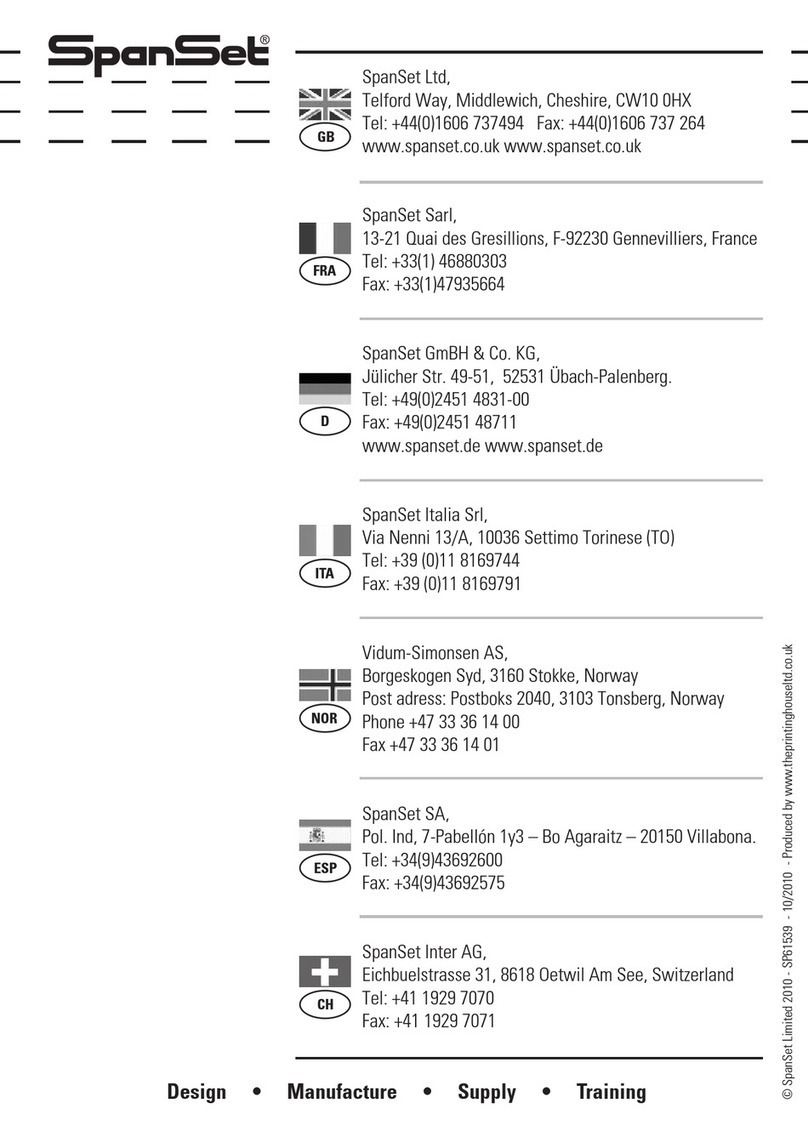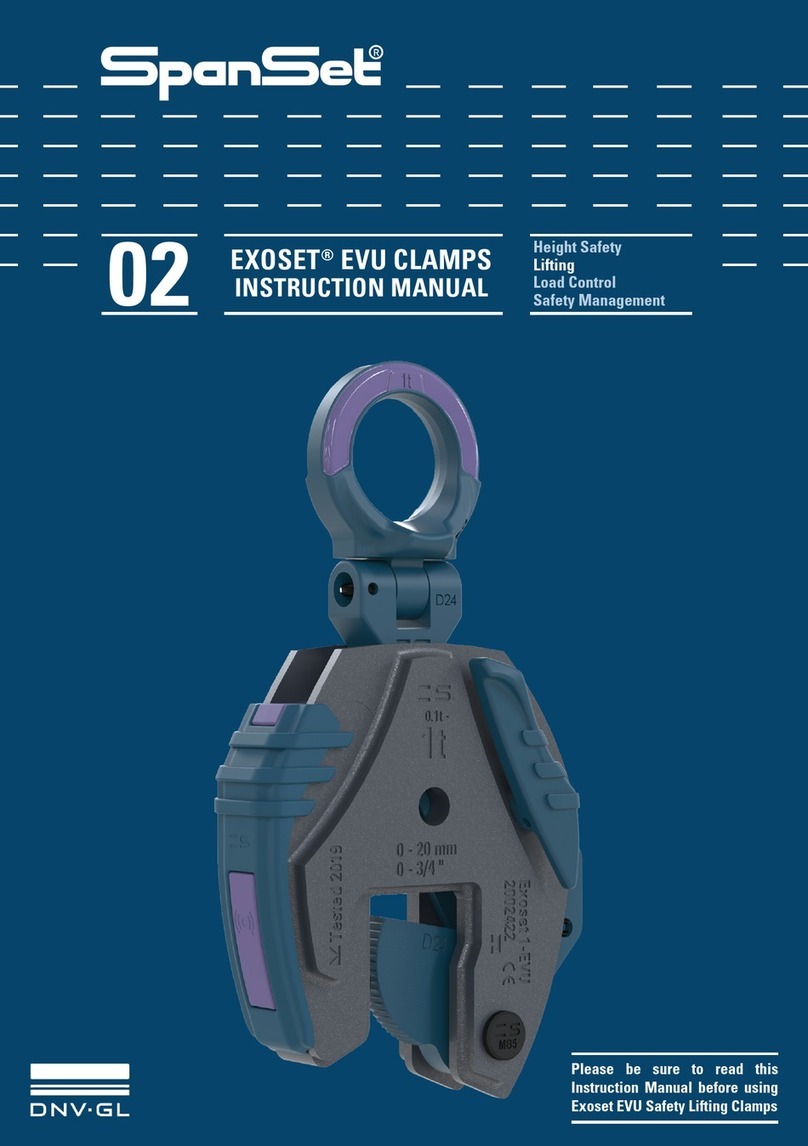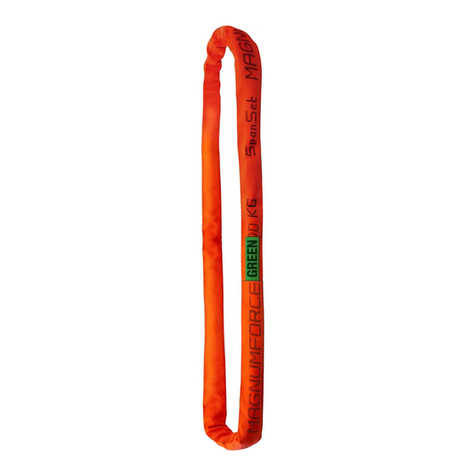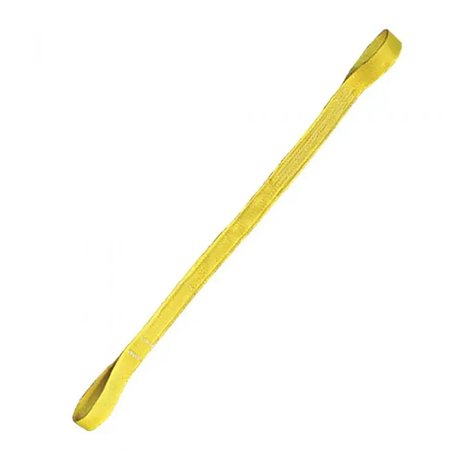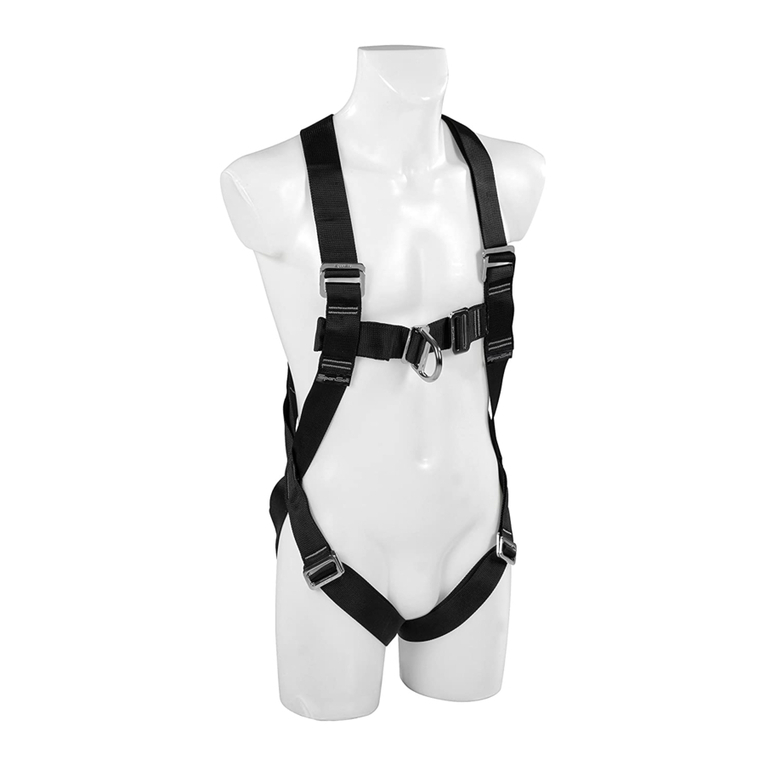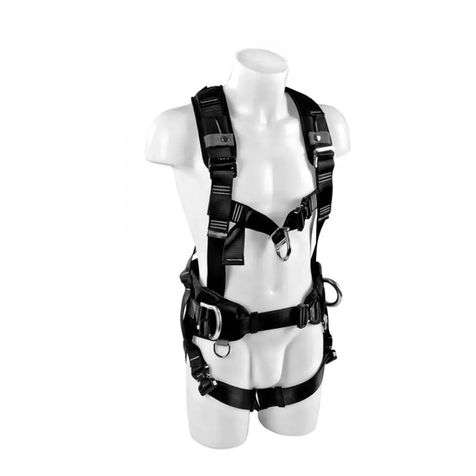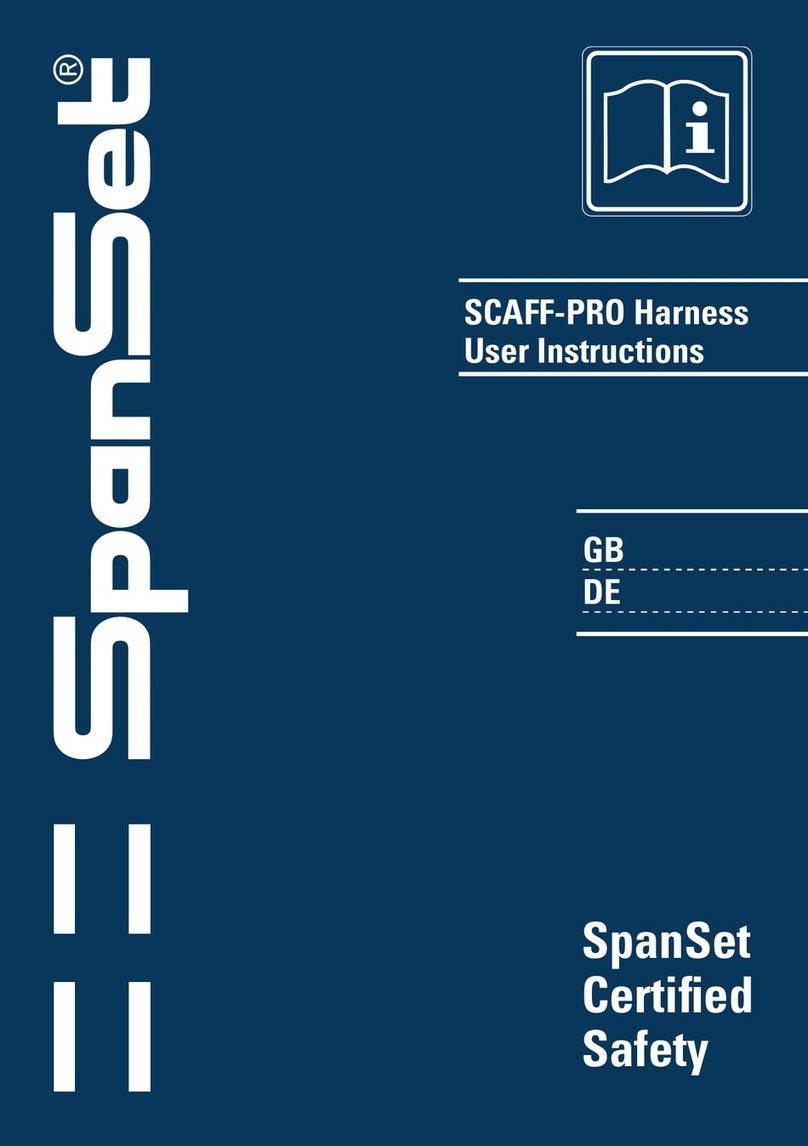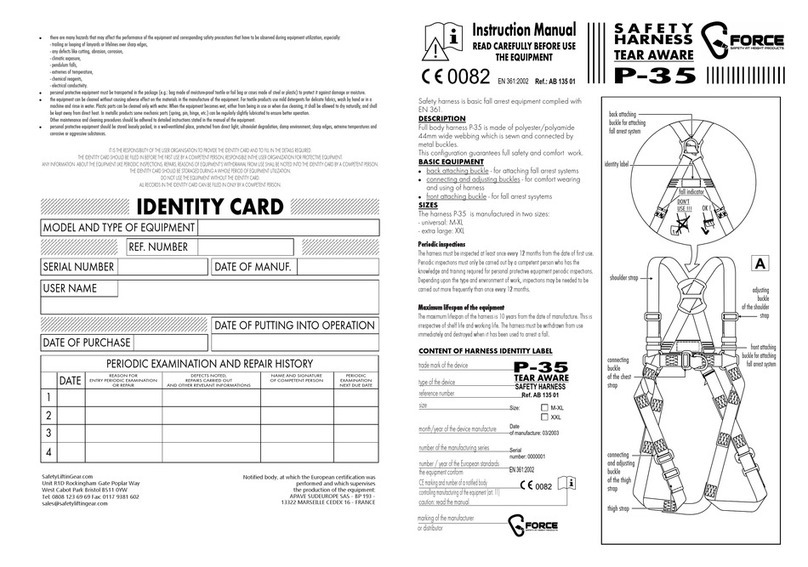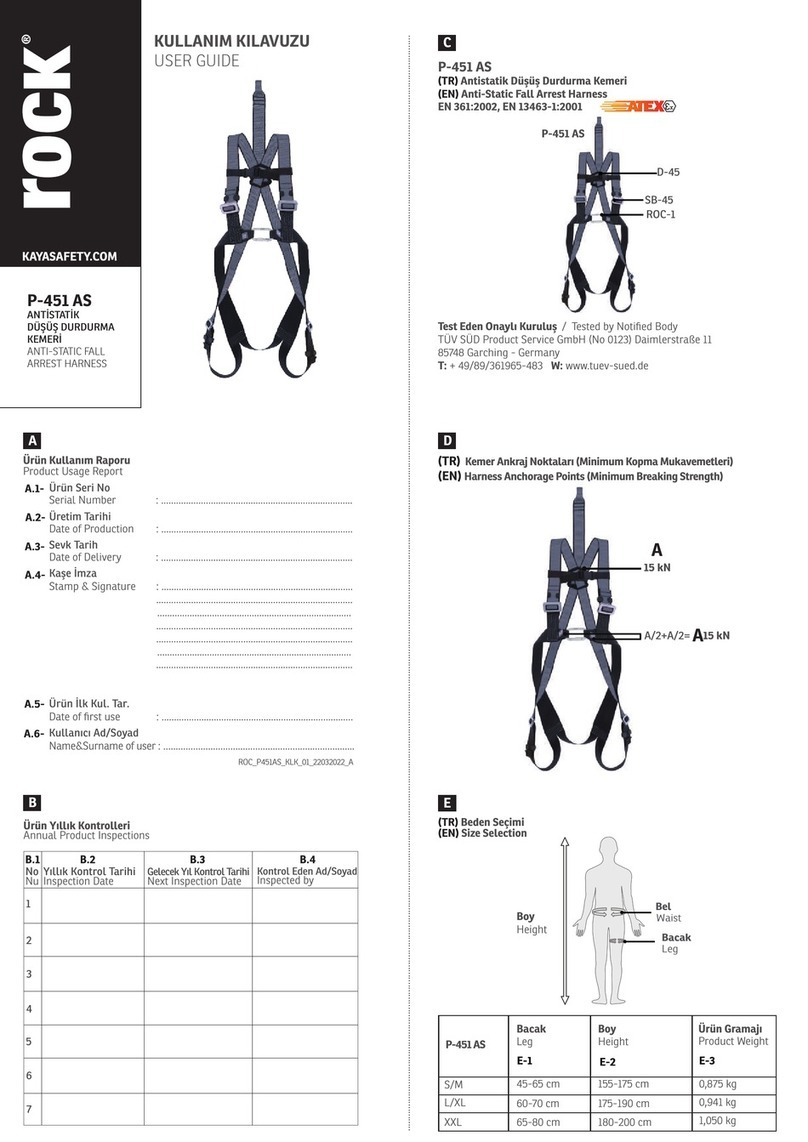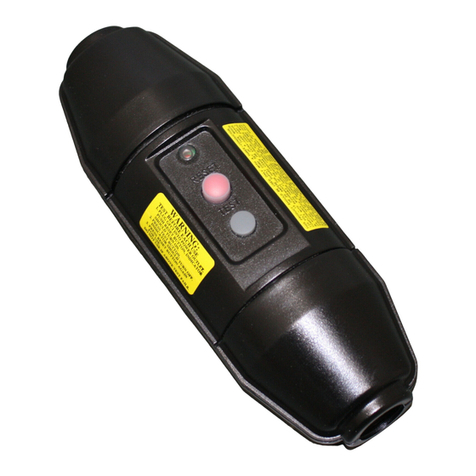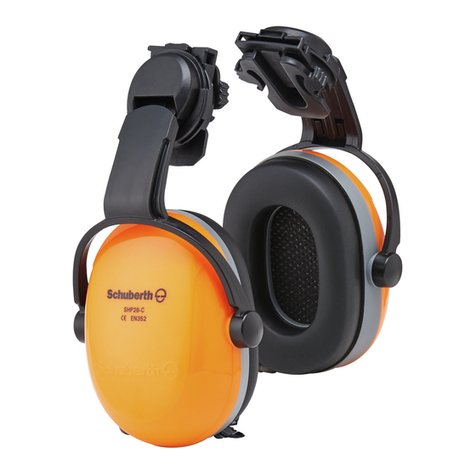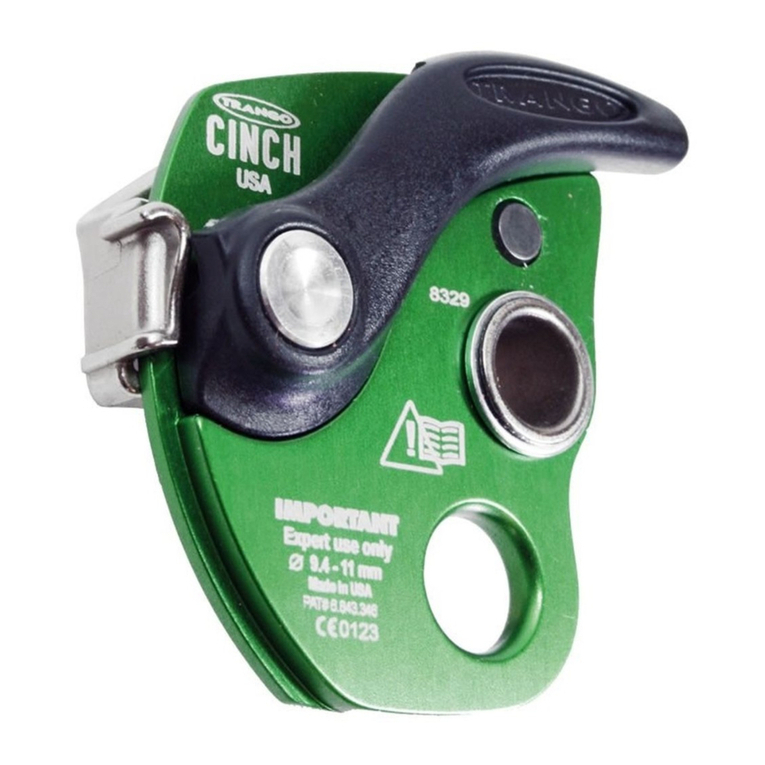
SpanSet Ltd, Middlewich, Cheshire, CW10 0HX
Tel: 01606 737494
www.spanset.co.uk
SELF EVACUATION
Read 1 to 7 of INITIAL SETUP
8. The containment bag can then be attached to the side of the full-body harness so that it hangs freely, or
thrown to the base of the descent. USE CAUTION IN WINDY CONDITIONS AND IF PERSONNEL ARE
BELOW.
9. Before leaving a position of safety, a check should be made to ensure that the auto-locking function of the
descender is functional. Applying body weight to the device as per the instructions above.
10. Carefully climb out of the structure, safe area, or platform and apply body weight to the descender.
11. Turn to face the structure.
12. Descend to ground level in a controlled manner as per the self-braking device instructions.
RESCUE OF AN INCAPACITATED CASUALTY (AT ANCHOR LEVEL)
Read 1 to 7 of INITIAL SETUP
8. The containment bag can then be attached to the side of the full-body harness so that it hangs freely, or
thrown to the base of the descent. USE CAUTION IN WINDY CONDITIONS AND IF PERSONNEL ARE
BELOW.
9. In a position of safety, a check should be made to ensure that the auto-locking function of the descender is
functional. Applying body weight to the device as per the instructions above.
10. Connect the remaining short extender to the front attachment point of the full body harness worn by the
casualty.
11. Carefully climb out of the structure, safe area, or platform and apply both body weights to the self-braking
device.
12. Turn to face the structure.
13. Descend to ground level in a controlled manner.
14. Casualty management during the descent is important. Where possible, the rescuer should straddle the
casualty with their legs placed both side of them, and planted firmly on the steelwork. This will make it
possible to ‘walk’ down any vertical surface, pushing away with the legs to ensure that the casualty is
protected from any possible collision with steelwork, etc.
RESCUE ON AN INCAPACITATED CASUALTY (SUSPENDED BELOW RESCUER)
Read 1 to 7 of INITIAL SETUP
8. The containment bag can then be attached to the side of the full-body harness so that it hangs freely, or
thrown to the base of the descent. USE CAUTION IN WINDY CONDITIONS AND IF PERSONNEL ARE
BELOW.
9. Before leaving a position of safety, a check should be made to ensure that the auto-locking function of the
descender is functional. Applying body weight to the device as per the instructions above.
10. Carefully climb out of the structure, safe area, or platform and apply body weight to the descender.
11. Turn to face the structure.
12. Descend in a controlled manner to a position directly level with the suspended casualty.
13. When this position is achieved, the rescuer should connect the remaining purple extender and karabiner
either the front or rear EN361 attachment point of the full body harness worn by the casualty (Fig 1).
ENSURE THE KARABINER IS SECURELY CLOSED AND LOCKED IN PLACE.
14. Having made this safe attachment to the casualty, the rescuer may then cut away the sling/Ianyard/rope, etc.,
from which the casualty is suspended. The weight of the casualty will then be transferred to the self-braking
device.
15. A wire rescue knife is provided within the SHARK Kit for the cutting procedure. The wire of the knife must
be looped once around the item of equipment (e.g. rope or lanyard) suspending the casualty. A back and
forth ‘sawing’ action rapidly cuts through rope or webbing (fig 2). After cutting the knife must be safely
stowed away.
16. Once the casualty is suspended from the rescue unit, descend to ground level in a controlled manner (fig 3).
17. Casualty management during the descent is important. Where possible, the rescuer should straddle the
casualty with their legs placed both side of them, and planted firmly on the steelwork. This will make it
possible to ‘walk’ down any vertical surface, pushing away with the legs to ensure that the casualty is
protected from any possible collision with steelwork, etc.
IMPORTANT NOTICE; SPECIFIC TRAINING IS ESSENTIAL BEFORE USE
This device must only be used by competent persons, or those placed under direct supervision and control of a
competent person. This notice illustrates the only correct way of using this device. All other uses are excluded due to
danger of death. Activities at height are dangerous with inherent risk of injury or death. Gaining adequate training in
appropriate techniques and safe methods is YOUR own responsibility.
